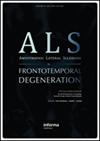“它意味着可能性”
引用次数: 0
摘要
在20世纪90年代艾滋病大流行之后,对“酷儿”一词的大胆拥抱和新技术引发了独立电影人的电影涌入,这些电影后来被称为“新酷儿电影”。作为那个时代的产物,新酷儿电影质疑它与之冲突的异性恋规范,从而孕育了对酷儿电影外观的重新想象。酷儿身份和异性恋环境之间的冲突使得酷儿个体和他们的社区以及更大的社会结构之间产生了距离。这种距离导致了一种孤立感。本文探讨了新酷儿电影中选择的孤立主题,并提供了一个潜在的参考点,从中我们可以了解另一种全球疾病- covid -19中的酷儿生活和文化生产。格斯·范·桑特(Gus Van Sant)的《我自己的私人爱达荷》(1991)强调了与异性恋规范的社会结构,特别是核心家庭单位的隔离。谢丽尔·邓耶(Cheryl Dunye)的《西瓜女》(The Watermelon Woman, 1996)关注的是面对这种孤立,酷儿亲属关系作为一种生存策略的策划。格雷格·荒木(Gregg Araki)的《完全搞砸了》(1993)和托马斯·贝祖查(Thomas Bezucha)的《大伊甸园》(2000)都探讨了自我孤立的主题。《完全搞砸了》为这一现象提供了一个重要的新酷儿电影视角;与此同时,“大伊甸园”挑战了同性恋者注定要被孤立的假设,想象了一个事实并非如此的未来。孤立的主题是新酷儿电影类型必不可少的,因为它是其环境的产物。然而,它也为未来酷儿电影和文化的可能性提供了一个可以想象的基础。当我们开始了解COVID-19加剧了结构和社会隔离对酷儿社区的影响时,理解这种关系至关重要。本文章由计算机程序翻译,如有差异,请以英文原文为准。
"It Means Possibility"
Following the cataclysmic AIDS epidemic in the 1990s, a defiant embrace of the word "queer" and new technology sparked an influx of films by independent filmmakers that were later termed "New Queer Cinema." As a product of its time, New Queer Cinema interrogates the heteronormativity it conflicts with and thus breeds a reimagining of what queer film can look like. The conflict between queer identity and its heteronormative surroundings drives distance between queer individuals and their communities, as well as larger social structures. This distance leads to a sense of isolation. This article explores themes of isolation within select New Queer Cinema films and offers a potential reference point from which we can understand queer life and cultural production in the midst of yet another global illness—COVID-19. Gus Van Sant’s 'My Own Private Idaho' (1991) highlights isolation from heteronormative social structures, particularly the nuclear family unit. Cheryl Dunye’s 'The Watermelon Woman' (1996) focuses on a curation of queer kinship as a survival tactic in the face of this isolation. Gregg Araki’s 'Totally Fucked Up' (1993) and Thomas Bezucha’s 'Big Eden' (2000) both explore themes of self-imposed isolation. 'Totally Fucked Up' provides an essential New Queer Cinema perspective of this phenomenon; meanwhile, 'Big Eden' challenges assumptions that queer individuals are destined to be isolated by imagining a future in which this is not the case. Themes of isolation are essential to the New Queer Cinema genre as a product of its circumstances. Yet, it also provides a basis from which the possibilities of future queer cinema and culture can be imagined. Understanding this relationship is critical as we begin to understand the effects of structural and social isolation on the queer community as exacerbated by COVID-19.
求助全文
通过发布文献求助,成功后即可免费获取论文全文。
去求助

 求助内容:
求助内容: 应助结果提醒方式:
应助结果提醒方式:


